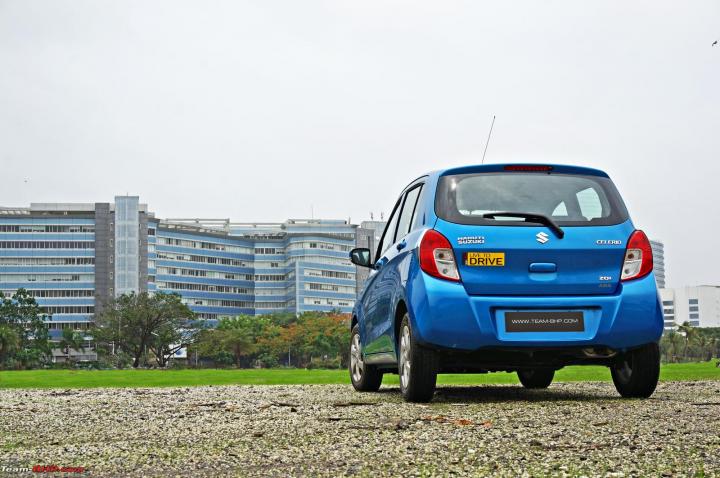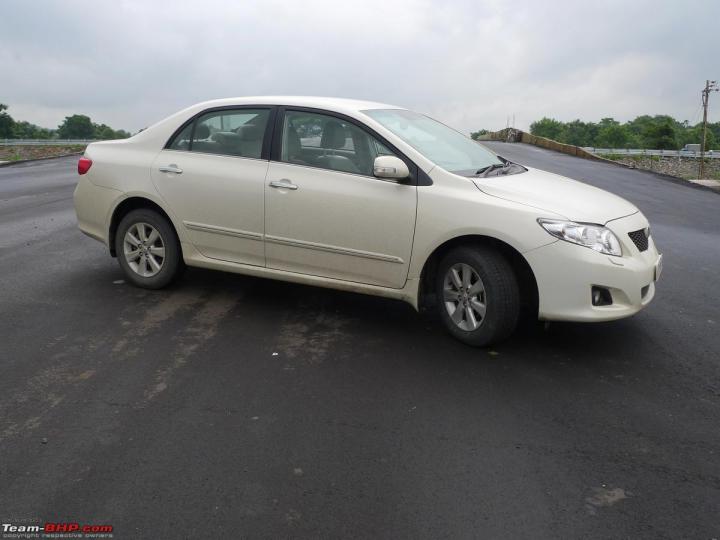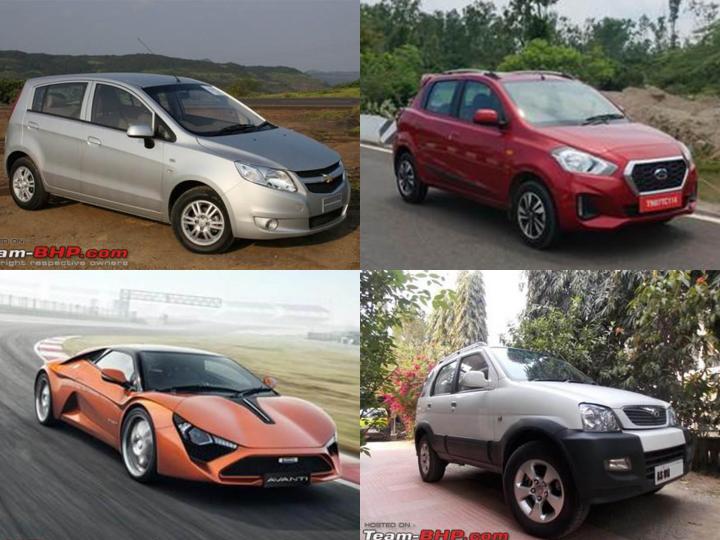News
Good cars in India that were let down by lacklustre engines
Every year, we see a new car or two that is otherwise very competent, but let down by its engine. This literally makes us go banging our heads in frustration. What was the manufacturer thinking??? All those years of effort & hundreds of crores invested in the car, but the manufacturer fell short in an area that counts the most?
Related article on why it is imperative to launch with the right engine + gearbox
Listed below are some cars whose engines were their Achilles Heel.
Mahindra TUV300
The original TUV300 was a competent 7-seater available at a price comparable to budget sedans. Alas, Mahindra launched it with an 84 BHP / 230 Nm engine. These figures were simply not enough for the 1,590 kg kerb weight of the body-on-frame vehicle. Loading up all seats made it grossly under-powered. Mahindra later introduced a "Plus" variant with the famous 2.2L diesel; some of us (including GTO) consider it to be superior to the Scorpio. But it was too little, too late.
Tata Altroz Petrol
The Altroz was launched earlier this year. It has almost no deal breakers. The car is good-looking, modern, spacious, well-equipped, safe and handles well. However, it is powered by the same 1.2L 3-cylinder naturally-aspirated petrol as the Tiago. The motor is quite anaemic & weak. A turbo-petrol is coming up, but Tata needs to understand that first impressions are lasting ones.
Honda CR-V Diesel
Honda had the gall to sell an (overpriced) crossover for 35-lakh rupees with a 118 BHP diesel! The SUV's power-to-weight ratio was a dismal 68 BHP / ton. The CR-V was otherwise very desirable. It had well-appointed interiors, excellent ride and handling and a good petrol engine. However, a small diesel & the absurd price let it down. With 7 occupants on board, the 1.6L diesel sure had its work cut out.
Maruti 1000
For its time, the Maruti 1000 was a total rockstar! We were kids then and thought of it as some kind of futuristic spaceship - the design was that "wow". If you bought a Maruti 1000, it was almost certain that the Income Tax department will raid your house. Under the hood however was a sad petrol 1.0L engine (same as the Gypsy) with a horsepower rating in the mid-40s. This motor had to be wrung hard to get any semblance of performance out of it & putting the air-con on would seriously jeopardise the driving experience. A couple of years later came the Esteem 1.3L which was the performance sedan of its time.
Fiat Punto & Linea
The Punto & Linea were very good looking cars. Additionally, they boasted solid European build and class-leading ride & handling. However, their engines – the petrols in particular - simply didn't match the show. While both cars came with a 1.4L petrol motor & 89 BHP on tap, lower variants of the Punto got a 1.2L petrol that put out just 67 BHP. Both cars begged for more power. In typical FCA fashion, the fix (1.4L T-Jet & Abarth variants) came after the market had already yawned & moved on. Old habits die hard - the Compass Diesel AT also arrived after customers had left the showroom.
Toyota Corolla Altis Diesel
Toyota had some serious guts plonking an 87 BHP 1.4L turbo-diesel in the Corolla's engine bay. Not only did the car suffer from serious turbo-lag, but it also lacked performance. GTO remembers vividly how he moved out to overtake a car in front on the highway, and it seemed like he had hit a wall! The Corolla 1.4L simply had no punch. Back then, the Corolla’s competitors had bigger diesels (Laura, Cruze, Jetta). The engine in the Chevrolet Cruze developed a crushing 148 BHP and 327 Nm! Enough said.
Renault Triber
Spend some time studying the Triber and you'll be amazed at just how intelligent the Renault is. It's a 3-row MPV at the price of B-segment hatchbacks, and a sub-4 meter car in which adults can sit on the 3rd row! Our biggest grouse with the Triber is its boring 1.0L n/a petrol engine that lacks pep & punch, gets noisy & leads to vibrations inside the cabin. As the Team-BHP Review said, it is the weakest link in this package.
Tata Tiago
Good-looking, well-built and competent in almost every aspect, the Tiago caught the eye of every customer in the entry-level segment. It was easily the most modern hatchback from Tata Motors, with surprisingly good interiors for the price. Sadly, the car was launched with a 1.2L petrol and a 1.05L 3-cylinder diesel engine. With ordinary power delivery characteristics & a kerb weight in excess of 1,000 kg, the Tiago was no road scorcher. The petrol was not refined either. Same price Marutis & Hyundais offer far superior powerplants.
Maruti Ciaz
Not as bad as some others on this list, but the biggest problem with the Ciaz was its original lineup of engines. The 1.4L petrol was completely lacking in character & was the weakest in the C2 sedan segment, while the 1.3L diesel was the same one used in the Swift! Maruti did correct this eventually with the 1.5L.
Volkswagen Polo 3-cylinder
When the VW Polo was launched in 2010, it was quite a hit. The Polo had a timeless design and German build quality. All the materials used in the construction of the car had a quality feel. What was not good? The petrol and diesel were 1.2L, 3-cylinder units. The petrol was among the less powerful engines in the segment while the diesel produced the least torque. The petrol simply could not match Maruti’s K12 for refinement, and the diesel fell way short of the Figo’s amazing 1.4L oil burner (in terms of driveability). Just when we thought they couldn't do any worse, VW later launched the Polo with a 1.0 MPI.
Mercedes-Benz C180
The C-Class was the most affordable Mercedes at its time. Back then though, Mercedes didn't understand the value of its own brand. The C180 had variants that sold without alloy wheels, leather seats & a CD changer! As if that wasn't disappointing enough, there was a frail petrol engine under the hood. Down on power, and down on reliability. Mercedes smartly replaced it with the supercharged C200K in 2005.
Audi A4
Audi launched this gen of the A4 with a 1.4L turbo-petrol! Yikes. At the same time that the car's sibling - the Octavia - was on sale with a delicious 1.8 TSI. We understand that the Octavia is significantly cheaper, but in this case, it was also indisputably the superior.
Maruti Celerio Diesel
Save the best for the last? No, in this case, it's the worst for the last. This is the only modern passenger car to be launched with a twin-cylinder diesel. We don't need to utter a word. Just crank the volume up and listen.
- Tags:
- Indian
- Worst cars
- Engines
News
The 10 worst Indian cars of the last decade
The Indian market has matured so much that you'd be hard-pressed to find a truly bad car on sale today. Most 2020 cars are either good or acceptable. However, ever so often, a rotten apple does somehow get launched...defying taste, common sense, research & wisdom.
Note: This is NOT a subjective list. It's also based on market performance and ALL of the listed cars have flopped in India. The Top 10 worst Indian cars of the last decade IMHO are as follows:
Mahindra Quanto
You can't simply shorten a failed product (Xylo) and expect it to sell. Yes, the Quanto was spacious and had a practical engine, but boy was it ugly! It also had the ride quality of a pogo stick. Mahindra later applied some lipstick on it, but the NuvoSport bombed too.
DC Avanti
Dilip Chhabria wanted to build a super'ish car for India, although enthusiasts gave it an extremely insulting i-g-n-o-r-e. Yes, I'll be the first to admit it was a fair effort by a tiny home-grown manufacturer and that its acceleration was decent for the price (acceleration mind you, not the top speed). But there was little else to lure any petrol-head toward it. The styling was weird (especially that ugly rear end), it was heavy at 1600 kilos, the build was inconsistent, the interior quality shoddy, there were no airbags and the sales / service support was zero. Of course, you then had "hand-built" car reliability & sloppy handling to live with. On the Lonavla ghats, a 10-lakh rupee Abarth Punto would leave this wannabe supercar for dead. Thanks DC, but for ~35 lakhs, gearheads will gladly pick up the world-class Octavia vRS instead.
Premier Rio
The losers at Premier Auto - who were partially responsible for ruining Peugeot & Fiat in India - thought they'll jump onto the emerging crossover trend with a cheap Chinese import. Luckily for India, its shrewd customers saw behind the facade and realised it's a rebadged Zotye Nomad from China (the cars even arrived with the Zotye badge). Worse still, Premier later did the usual "Padmini jugaad" and plonked the 1.3L MJD into it. The Rio was horribly built, had a depressing interior, was noisy and suffered awful highway manners. Then of course were the suspect promoters backing it!
Datsun Go / Go+
Datsun represents what is a completely disjointed thought process & strategy from none other than fugitive Carlos Ghosn himself! Enthusiastically entering the Indian market thinking that "cheap will sell", Datsun launched the Go without even a glovebox lid. Cost-cutting is more obvious than at your local beedi shop, and there was a mobile docking port offered instead of a head-unit! The Go+ then showed the world how NOT to do a 3rd-row seat (although sister concern Renault did it right with the Triber).
Ashok Leyland Stile
A truck maker tried to enter the car segment with a shortcut and it ended pretty badly. Not only did the car fail, but it led to a messy divorce in the courts (related link). The Stile is a rebadged Nissan Evalia, albeit a poorer + decontented version of what was already a flop car. So stripped was the Stile that its supposed top-end LX version (costing over a million bucks, mind you) didn't even get a rear defogger or remote locking! The hapless dealers were forced to think up schemes, giving away a Stile for free if you placed a big truck order. IMHO, Ashok Leyland should stick to making trucks & buses.
Isuzu MU-7
Isuzu launched the D-Max pickup truck which BHPians loved (review link) & at a fantastic price too. Overnight, it became the best pickup truck on sale in India. Sadly, Isuzu also brought in the outdated MU-7 SUV which was already being replaced by the newer MU-X internationally. The old MU-7 was overpriced for what it offered, had a 1980s interior and no brand value / dealer network to speak of. Not that its replacement - the MU-X - did any better. Isuzu didn't learn from earlier mistakes and launched the 2013 MU-X in 2017 (instead of the latest version). The MU-X's gearbox was terribly slow, the wavy ride quality can make you car-sick and it corners like a ship. Both SUVs deservedly sank like the Titanic.
Mahindra Verito Vibe
I can't decide which one is the uglier hack job - the Quanto or this contraption? It's one of those OEM products that deserves an entry in our weird & wacky mod jobs thread. Can't decide if this weirdo was a joke from Mahindra or an unpardonable error? Any which way, it made the company a laughing stock. An outdated design, basic interior and such a poor chop-job that 50% of people think it's an ugly hatchback, while the other 50% think it's a sedan.
Force One
Force Motors wanted to cash in on the SUV craze, but didn't have the resources to develop a proper one in-house. So, it simply did what me and you do on AliExpress = placed an order in China + shipped it in. Drive the Force One and you'll know how unsorted it was. Not to forget, the unlucky few who did buy one had to contend with reliability issues, scarce part availability and clueless after-sales support. Not even Amitabh Bachchan could save this turkey (he was the brand ambassador). There was simply no reason to pick it up over say, the similarly priced XUV500.
Chevrolet Sail / U-VA
You'll find this hard to believe, but the group that brought the MG Hector here is the same one behind the Sail twins. You could say they learnt their lesson! The Sail & U-VA were so boring that - apparently - the agency making a pitch told Chevy to rebrand the cars as vanilla 1 & vanilla 2. Don't get me wrong, there was nothing fundamentally wrong with the cars, but the problem was that whoever saw one fell asleep instantly. If the dictionary ever needed a graphical representation of "boring", they should use this picture. In a market that was getting snazzier designs from other car makers, no customer even noticed the Sail twins' boring exterior + boring interior + boring drive. I'm yawning, just writing this paragraph.
Renault Koleos
The Koleos was one of the first products Renault launched in India...and among the worst. Launched at an obscene 23 lakhs in 2011, it was more expensive than the Fortuner & Endeavour! The BMW X1 wasn't too far away either. The product itself had a dimwitted automatic gearbox, limited rear seat space, awkward styling and zero badge value. As a result, this dud is rarer than a Ferrari on Indian roads.












